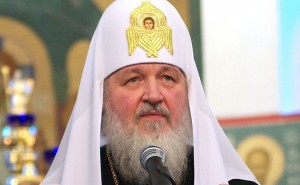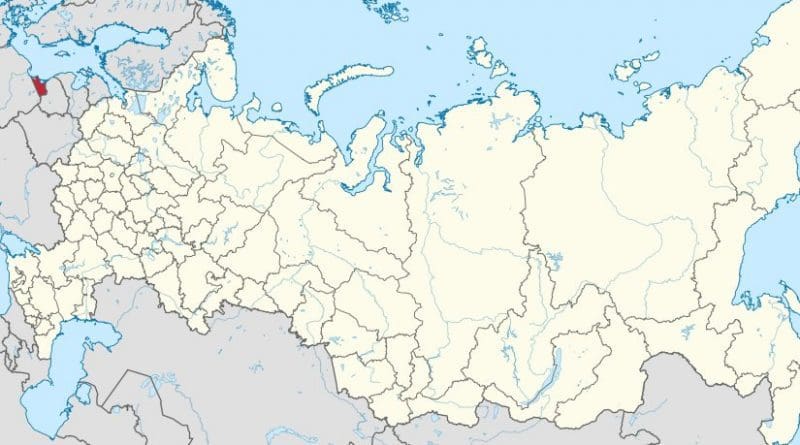Kaliningrad: Baltic Hong Kong No Longer – Analysis
By Published by the Foreign Policy Research Institute
By Sergey Sukhankin*
(FPRI) — Kaliningrad Oblast—the westernmost Russian region physically separated from the Russian mainland—is a unique case study in post-Soviet transformation. The post-1991 oblast had all of the elements necessary for a success story: proximity to Europe, a liberal governor, peace, relative stability, and absence of other negative factors. Many parts of the Russian Federation were not endowed with these qualities, but Kaliningrad was. Initially deemed a “bridge of cooperation,” the “Russian getaway to Europe,” and the “Baltic Hong Kong,” the exclave turned out to be one of the greatest disappointments that post-Soviet area has seen.
Not only did Kaliningrad fail to become a site of cooperation and dialogue between Russia and the European Union, it deteriorated into a “military bastion,” dependent on hand-outs from the central government. The Baltic Hong Kong became Russia’s Baltic Corregidor—a military base with the capability of cutting off other countries’ access to the Baltic Sea. Moreover, the once hoped for cooperation with the West is being mercilessly destroyed through implementation of the “Russian World” project and the elimination of the region’s German historic-cultural legacy.
From Soviet “Military Bastion” to the “Russian Embarrassment”
After it was annexed in 1945, Kaliningrad became a Soviet military outpost on the Baltic Sea. To keep it afloat, Moscow allocated enormous financial resources to prop up the local economy as a form of “compensation” for its adverse location. Kaliningrad elites quickly learned the lesson that they could extract resources from the central government for their own benefit.
Everything, however, changed in 1991 when the USSR collapsed. In addition to vast opportunities and great expectations, the post-Soviet world introduced a new challenging reality. Kaliningrad could have become Russia’s response to Hong Kong and serve a “bridge” between Europe and Russia. Yet, for Kaliningrad to take this path, local elites and the Kremlin needed a “road map” for the region’s development. Equally important, however, was the local population’s willingness to accept a new reality, in which competition is a pre-requisite for progress, prosperity, and success. Neither of these came to pass. Instead of prosperity and Europeanization, Kaliningrad became a Russian backwater region. Instead of being known for the birthplace of Kant and Bessel, the oblast was associated with an HIV/AIDS epidemic, smuggling, and widespread criminality.
“Stability for Tranquillity” or Everything Comes at a Price
Transition from a somewhat privileged Soviet city into a backwards region shocked the local population, and led them to welcome promises of stability, whatever the source. Vladimir Putin’s accession as president of the Russian Federation in 2000 had crucial and far-reaching implications for Kaliningrad. This shift became clear in 2005, during celebrations of 750th anniversary of Kaliningrad. From this point, Moscow identified its determination to choose the path of development for Kaliningrad: during elaborate anniversary celebrations, Georgy Boos, who had been handpicked by Putin, was presented as the next governor of the oblast. Similarly, the Kremlin suggested that legislation passed in 2006 giving Kaliningrad tax breaks as part of a Special Economic Zone (SEZ) was to become the backbone of the local economy.
Yet, it soon became clear that both changes were designed to increase dependence on Moscow. For instance, the new SEZ gave priority to big businesses, primarily from Moscow, restricting foreign companies’ access to the local market. Moreover, prioritizing large enterprises over small and medium size enterprises (SMEs) did not take into account the limited size of the local market and the lack of resources that were to be transported from the Russian mainland. In practice, this meant the local economy was to be artificially supported by financial subsidies from the central government. By refocusing Kaliningrad’s economy toward hand-outs from the central government, the Kremlin restarted policies that had been pursued by the Communist regime before 1991. The main outcome—skyrocketing corruption and further reliance on federal support—must have been expected by the Kremlin as an antidote against excessive independence and forging external contacts.
The Unsuccessful Revolt: Is Something Rotten in the Oblast of Kaliningrad?
This model functioned relatively well for several years before it first encountered serious challenges. The outbreak of the global economic crisis in 2008 showed how brittle and one-sided the Russian economy was. The federal centre could no longer provide the enclave with the same level of subsidies, urging the governor to raise funds from Kaliningrad itself. The local government increased taxes and levied utility charges on one of the most profitable local businesses, the transportation of vehicles from the European Union to Russia. At the same time, the government tolerated spending cuts on medical facilities. These tax increases and medical clinic closures inspired a wave of public discontent that broke into mass protests, eventually known as the “Tangerine Spring” in late 2009 – 2010. As a result, Georgy Boos was practically evicted from the oblast. Slogans, such as “United Russia go to Russia!” and “Down with Boos, down with Putin!” resonated far beyond the tiny enclave. The Kremlin watched these developments with a growing sense of alarm.
Influenced by events in the westernmost Russian region, many external and domestic observers rushed to celebrate the victory of Kaliningrad democracy, calling Kaliningrad the “Russian Gdansk,” a reference to the Polish city that led protests against that country’s communist rulers in 1989. Unfortunately, they celebrated too quickly. The locals revolted not because of values but because of their economic situation: the Kremlin was not providing the promised funding. The truth is that Kaliningrad could not have become Gdansk. Its Soviet legacy still shapes the outlook of a sizable part of the local community. The “Kaliningrad identity” is based solely on Soviet nostalgia.
Kaliningrad in the Vanguard of the “Russian World:” What is the End Game?
Another milestone occurred in 2008 when Patriarch Kirill became the head of the Russian Orthodox Church (ROC). As the Metropolitan of Smolensk and Kaliningrad, this powerful figure became the main advocate of Kaliningrad Oblast in Moscow. His accession had a profound effect on the “Russian World” project, with the church playing a larger role in Russian foreign policy. In this regard, Russia’s westernmost enclave was to acquire a new identity based on enormous transformation. No longer on the periphery, now Kaliningrad was described as the beacon and citadel of the “Russian World” in Europe. This new image was pronounced by the Patriarch in 2015 during his visit to Kaliningrad.

In the meantime, there were some disturbing aspects to this transformation. First, local authorities allied with the church launched another crusade against remnants of the German cultural legacy (which Kirill called “old stones,” referring to German churches). If this trend continues, soon, little will remain of Kaliningrad’s rich historical and cultural traditions from its German past. Second, Russian authorities keep trying to cut Kaliningrad’s links with the outside world. In addition to cancelling short-term visa free access for foreigners, the oldest local NGO “The German – Russian House,” which had opened in the early 1990s, was labelled a “foreign agent” and was forced to close. Third, various “patriotic” and paramilitary groups have gained popularity. These range from Cossacks to the notorious Yunarmia movement, an initiative of the Russian Ministry of Defence aimed at fostering a bond between the army and the young generations of Russians. Moscow is pursuing a policy of militarization of the public consciousness. Finally, Kaliningrad has become a mechanism by which Moscow generates anti-Baltic sentiments. An ugly incident in Vilnius, Lithuania at the end of 2016 when the Russian Embassy was implicated in dissemination of highly provocative anti-Lithuanian leaflets summoning the locals to move to Kaliningrad is a recent example.
Scenarios for Future Development
Growing disappointment with the new U.S. administration among Russian ruling elites, continuing sanctions, and worsening economic conditions will push Moscow to increase its anti-Western sentiment. Over the 26 years of post-Soviet development, Kaliningrad Oblast has worked as a litmus test of Russian relations with the West. For the oblast, the new anti-Western trend means greater isolation and further military build-up on its territory. In other words, Kaliningrad is returning to its pre-1991 status. In the meantime, in dealing with Kaliningrad today, Moscow is haunted by the same curse from 25 years ago: the absence of a strategy for economic development beyond distributing subsidies from the central government. The main proof—the abrogation of the Special Economic Zone status in April 2016 and the government’s failure to offer an alternative—showed that the old model does not work, and a new model does not exist.
Despite this situation, the Kremlin is determined to pursue its current course of dealing with the oblast, which is reflected in the growing military build-up. Therefore, the current model—economic support in exchange for loyalty—will continue to dominate Moscow’s relations with Kaliningrad.
About the author:
*Sergey Sukhankin is an Associate Expert at the International Centre for Policy Studies (Kiev) and a Visiting Scholar at IBEI (Barcelona).
Source:
This article was published by FPRI.


I would say that compared to for example West Ukraine Kaliningrad has done rather well.
In West Ukraine 30 Oligarchs own Ukraine. None of them is an ethnic Ukrainian. And apparently no ethnic Ukrainian has made it to become President, Prime Minister or Economics Minister, the three “gold mine ministers”